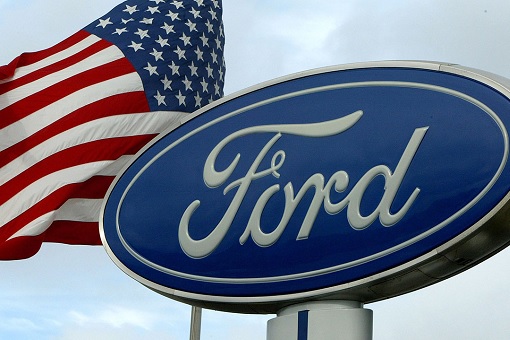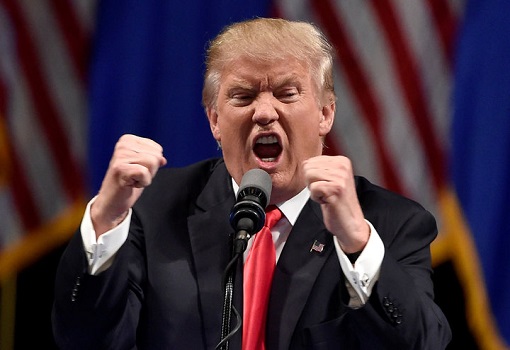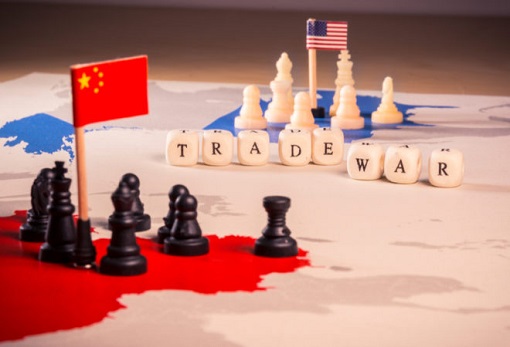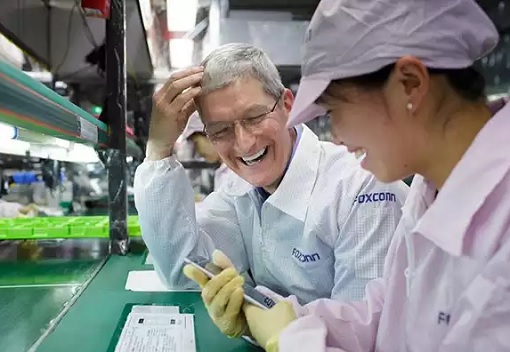Investors are looking for an endgame to the trade war between the world’s two biggest economies – China and United States. But there has been no endgame since the dispute started since March 2018. Instead, it appears the endgame has just begun. And a global recession – even depression – looks inevitable. On Friday, Dow lost 623.34 points after briefly dropped 745 points.
What happened on Friday? Lots of firepower was unleashed by both nations against each other. China, and the world for that matter, was probably shocked earlier this month when President Donald Trump suddenly and unilaterally announced plans to slap 10% tariff beginning September 1 on the remaining US$300 billion of Chinese products after talks broke down in May.
In retaliation, the Chinese deliberately devalued its currency Yuan (Renminbi) and suspended purchases of American agricultural products. But it had no plan to stop there. It was just the appetizer. So on Friday (August 23), Beijing announced it decided to slap tariffs ranging from 5% to 10% on the remaining US$75 billion U.S. goods in two batches – effective on Sept. 1 and Dec. 15.
The timing matches Trump’s planned tariff hikes on US$300 billion in Chinese goods. With that, both parties have slapped taxes on all the products that rival exports to each other. Fair and square, right? Not really. Last year, U.S. exports to China were only US$130 billion while imports from China were US$505.5 billion, hence the US$375 billion deficit.
In other words, Trump’s tariffs cannot be matched by Beijing. However, the U.S. might have underestimated the creativity of China in its retaliation against Washington, ergo the currency devaluation and suspension of American agricultural product purchases. In addition, a 25% tariff will be imposed on U.S. cars and a 5% on auto parts and components – to go into effect on December 15.
Cars manufactured in the U.S. – BMW, Tesla, Ford and Mercedes Benz – will be the hardest hit by the Chinese auto tariffs. In essence, with existing general duties on automobiles taken into account, the total tariff charged on U.S. made cars would be as high as 50%. This round, it was Trump’s turn to be shocked and surprised with the level of retaliation demonstrated by China.

According to the U.S. International Trade Administration, China is the second-largest export market for U.S.-made automobiles, accounting for US$6.2 billion of exports last year. In terms of parts, the country was the third- largest market, with 2018 exports worth US$3.6 billion. In total, auto makers exported roughly 230,100 U.S.-built cars to China in 2018.
Trump was not impressed that President Xi Jinping had fired more shots than him. The latest tariffs from China will hit more than 5,000 U.S. products, including soybean, oil and aircraft. Iowa is the largest producer of soybeans, while Michigan and Ohio have the biggest concentration of auto manufacturing. These 3 states helped Trump to win the White House in the 2016 presidential election.
The U.S. president was so angry that he, like an Emperor, ordered U.S. companies to exit China – “We don’t need China and, frankly, would be far better off without them. Our great American companies are hereby ordered to immediately start looking for an alternative to China, including bringing your companies HOME and making your products in the USA.”

Prior to Friday, President Trump, despite the trade tensions between both countries, would make it a point to praise China President Xi Jinping as a great leader, a good man and more importantly – a friend. The U.S. president had even once said that he does not actually blame China for the unfair trade – “I don’t blame President Xi. I blame our past leaders for allowing it to happen.”
Not on Friday. The Chinese leader is now the enemy of the state. In one of a series of tweets that spooked the markets on Friday, Trump wrote – “My only question is, who is our bigger enemy, Jay Powell or Chairman Xi?” Before his flight to France for the G-7 summit on Friday night, the furious U.S. president struck back. He can’t lose face, let alone intimidated by the Chinese.
After financial markets closed, Trump responded by saying he would raise the rate of existing and planned tariffs on Chinese imports by 5 percentage points. He announced that a 10% duty on US$300 billion in Chinese goods will be raised to 15% in September while a 25% tariff on US$250 billion in imports would be increased to 30% in October.

Although Trump can introduce new tariffs or raise the rate of existing tariffs, he can’t unilaterally direct companies where to do business so that the president could win the trade war with China, a war he had childishly declared is good can be won easily. In other words, the Commander-in-Chief cannot legally compelU.S. companies to abandon China immediately.
Perhaps the president is still clueless that for many products sold in the United States, there are few alternatives to Chinese production. So even if American companies wanted to seek alternatives to Chinese supply chains, they can’t, simply because shifting production for major goods produced in China could take years and be expensive.
Donald Trump must be smoking some kind of grass if he thinks he could sign an “Executive Order” to force U.S. companies obey his orders. When push comes to shove, American companies could instead sue the U.S. government in response to any order to close plants in China. In reality, some companies have already tried to diversify – with mixed results.

Senator Lindsey Graham, a close ally of the president, said – “I think that’s typical Trump, kind of over the top. He can’t order anybody and he knows that. I think he’s pushing as hard as he can to get the Chinese to take what we’re doing seriously.” However, without realising it, Trump’s desire to win the trade war has exposed his desperation and Achilles Heel for all to see.
The stocks – Dow Jones Industrial Average – didn’t drop more than 600 points on Friday because China finally decided to slap tariffs ranging from 5% to 10% on the remaining US$75 billion U.S. goods. Nor was it because Federal Reserve Chairman Jerome Powell said in the same Friday morning that the Fed stood ready to stimulate the economy as needed.
The Wall Street crashed more than 600 points because the markets reacted negatively to President Trump’s tweets, which were made because the world’s most powerful man was panicked. The last thing the markets needed was an angry president criticizing the Federal Reserve, declaring President Xi an enemy and giving an order to U.S. companies to quit China.

FINANCE TWITTER




No comments:
Post a Comment
Note: Only a member of this blog may post a comment.